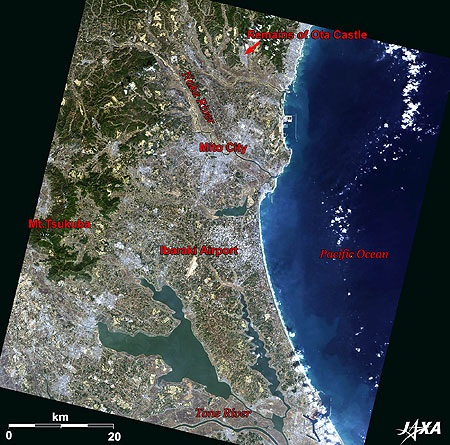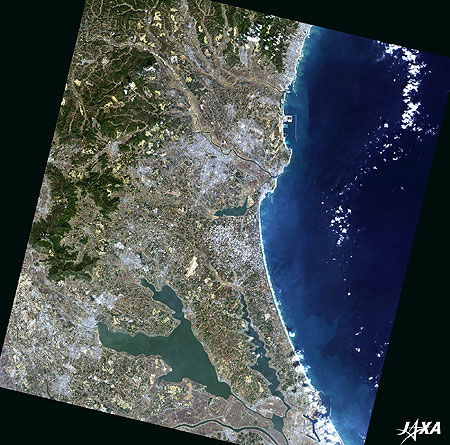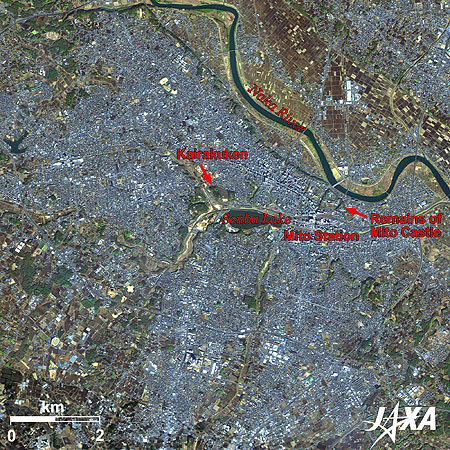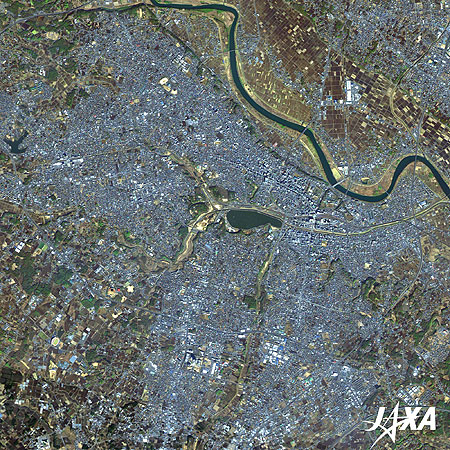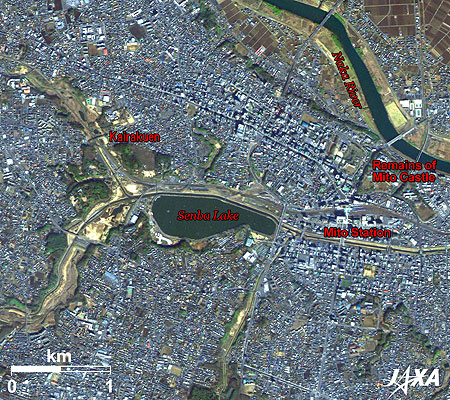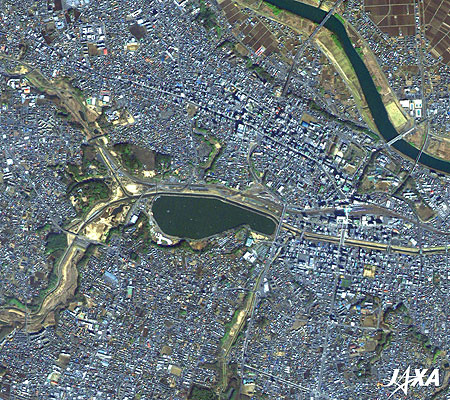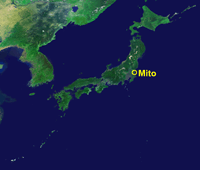Seen from Space 2011
With the Scent of Japanese Plum: Mito, Japan
|
Fig. 1. Southern Ibaraki Prefecture
Figure 1 is an image of southern Ibaraki Prefecture in Japan as observed by ALOS (“Daichi”) in February 2010. The coastline on the right-hand side of the figure faces Kashima-nada (“nada” means a rough sea with a rapid current) in the Pacific Ocean. The lake at the bottom is Kasumigaura, the second largest lake in Japan, and a portion of the Tone River is visible below the lake. Ibaraki Airport, opened in March 2010, is visible to the north of Kasumigaura. The area surrounding the airport is a leading agricultural zone and vegetables such as Chinese cabbage, lettuce, burdock, and Japanese pumpkin are the major products of the area. The white area to the north of the airport is Mito, the prefectural capital of Ibaraki. Fig. 2. Enlarged Image of Mito
Figure 2 is an enlarged image of the urban area of Mito. Senba Lake, JR (Japan Railways) Mito Station to the right of the lake, and the remains of Mito Castle further to the east are visible near the center of the image. The Naka River flows at the north side of the city. Transportation by water developed there in old times and the name Mito was said to have derived from minato meaning “port” since it grew as a port town. Fig. 3. Enlarged Image of Senba Lake and Its Vicinity
Mito (kmz, 5.14 MB, Low Resolution) as seen on Google Earth. 
Senba Lake and Kairakuen: Oases for the CitizensSenba Lake is seen in the center of the image, and Kairakuen, the renowned garden famous for the Japanese plum, is located north of the lake. There are highlights of other flowers all through the seasons, such as cherries, Kirishima azaleas, bush clovers, and Japanese maples. The garden has 3,000 plum trees of 100 different kinds, and this year the Plum Festival is to be held from February 20 to March 31. 
Two Lords of Virtue in the Mito DomainThe second lord of the Mito Domain was Mitsukuni Tokugawa, who is well known as Mito Komon. Mitsukuni made many efforts to build a water supply system and other facilities of infrastructure in the castle town of Mito in order to stabilize the government of the domain. He also invited scholars to assist in the compilation of a history book known as The Great History of Japan. This work continued even after Mitsukuni’s death and was completed in the form of 400-plus-page volumes of history books in 1906. The scholarship formed through this compilation was called Mitogaku (Mito School) and exerted a major influence on the Sonno-Joi movement (the Japanese political slogan to Revere the Emperor, Expel the Barbarians at the end of Edo period) and became one of the driving forces behind the Meiji Restoration. Reference Sites:Explanation of the Images:
AVNIR-2 has four observation bands. The color composite images are produced by assigning red to Band 3 (610 to 690 nm), green to Band 2 (520 to 600 nm), and blue to Band 1 (420 to 500 nm). The resulting images have natural coloring as if seen by the naked eye. Each color indicates the following ground objects:
(Fig. 2 and 3) |
